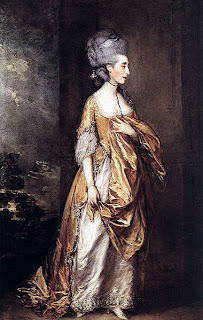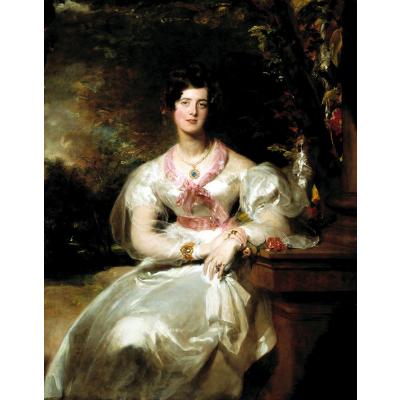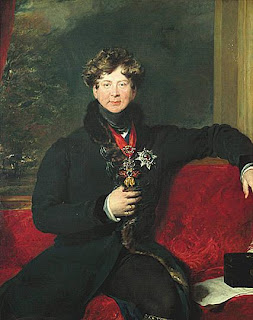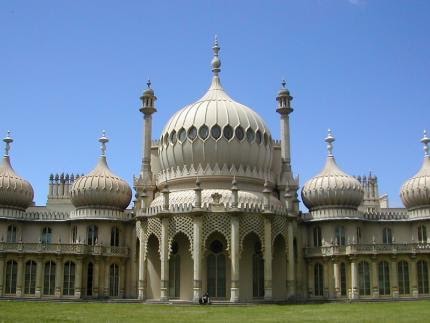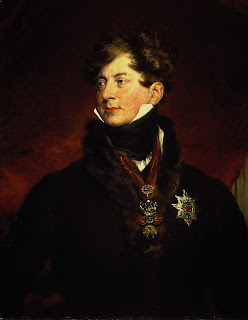Sir John Soane (1784-1837) was a distinguished architect in Georgian England whose works have received at great deal of attention from 20th and 21st century architects. His work was unique for his time and appealing to the contemporary sensibility, both then and now. For information on his London home and museum, see the blog post of 9/24/11. This post will discuss two more of his buildings, Pitshanger Manor and the Dulwich Picture Gallery.
 |
| Pitshanger Manor, Ealing, Greater London |
Soane had a well established practice and had completed most work on his own London home in Lincoln’s Inn Fields by 1800. He wanted a villa west of the city where he, his wife and two sons could enjoy country life. He purchased 28 acres for £ 4,500 including an existing house and outbuildings, known as Pitshanger Manor. Eventually, he demolished most of the existing structures, saving only a wing designed by his mentor, architect George Dance, in the 1770’s for previous owners. Over the next few years, Soane and his students worked on the house. Almost all of the drawings and receipts for the construction, decoration and furnishing of the house have been preserved in Sir John Soane’s Museum.
 |
| Library, Pitshanger Manor |
London has spread out quite a bit and Pitshanger Manor is now in a park in the suburb of Ealing, reachable by the Underground, amidst an affluent bedroom community. In the early 20th century, the building had become the local library, with an addition for additional space. Since the mid-80’s, it has been opened to the public and carefully restored to the look of Soane’s day, except for the addition which is used for small art exhibitions.
 |
| Breakfast Room., Pitshanger Manor |
The interiors are clearly neo-classic, but have a distinctly contemporary feel. One can easily see why post-modernists are attracted to Soane’s work. The breakfast room has walls with marbled effects, a popular technique used by today’s designers.
 |
| Dulwich Picture Gallery |
In another section of suburban London, the Dulwich Picture Gallery attracts many visitors to its collection of Old Masters. It is Britain’s first purpose-built public picture gallery, and Soane’s design set the standard for every art museum since. The Picture Gallery is located on the campus of Dulwich College, established in the early 17th century in the village of Dulwich, where it today serves about 1600 boys, ages 7 to 18.
The Picture Gallery came about as a result of several coincidences A London art dealer Noel Desenfans (1745-1807) was asked by the King of Poland to assemble paintings for a national collection in 1790. However, within a few years, Poland had been divided up among Austria, Prussia and Russia. Desenfans tried to sell the collection but met with no success. Therefore he decided, with the help of his friend, Francis
Bourgeois, to set up a public gallery. After his death, Bourgeois willed the collection to Dulwich College. His friend Sir John Soane designed the building, which also includes a mausoleum for Mr. and Mrs. Desenfans and Bourgeois.
Soane’s design was unique, using extensive skylights to bring in natural light. Building began on October 12, 1811. Originally there were five galleries on either side of the mausoleum and flanked by almshouses, which were later converted to additional galleries. Further additions have been kept in sympathy with the original designs.
Girl Leaning on a Window-sill, Rembrandt
The collection contains many gems, some dating from the establishment of the original college, many from the Desenfans collection, others from more recent acquisitions. The Gallery’s website is
here.
The Madonna of the Rosary: Murillo
Thomas Linley (1732-95) and his son, also Thomas (1756-98) were famous composers and musical performers in Georgian England, along with Elizabeth and Mary, the elder Thomas’s daughters. They were good friends of the renowned portraitist Thomas Gainsborough (1727-1788) who painted all of them. Gainsborough’s portrait of the Linley Sisters, below, was part of a bequest of Linley family portraits to the
Gallery. Elizabeth Linley (in blue) was painted just before she eloped and eventually married Richard Brinsley Sheridan, playwright and politician.
The Linley Sisters by Gainsborough
Two hundred years after its establishment, the Dulwich Picture Gallery is thriving; it has won many awards for its extensive educational programs. It stands as a tribute to its founders and to the designer of its trail-blazing building, Sir John Soane.










